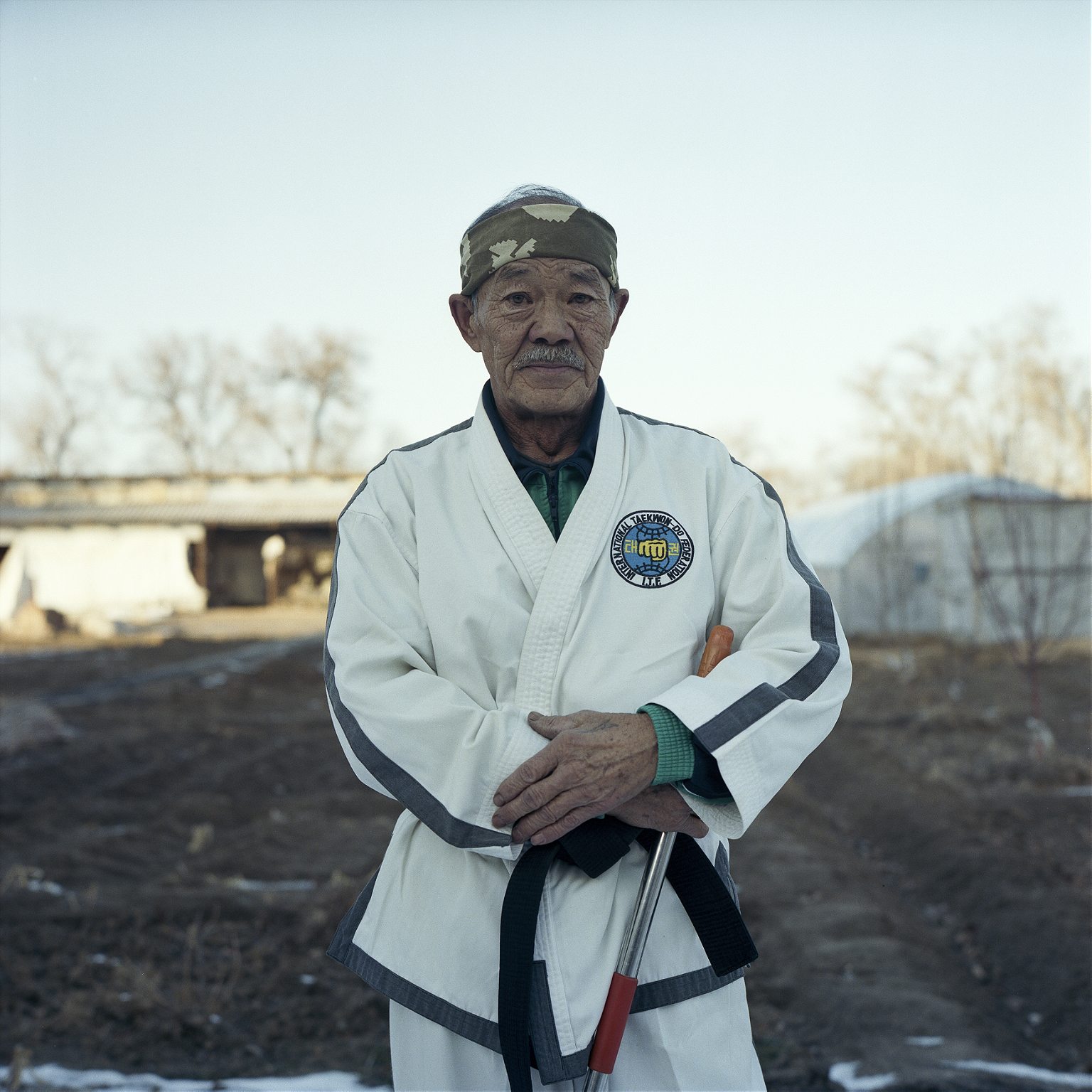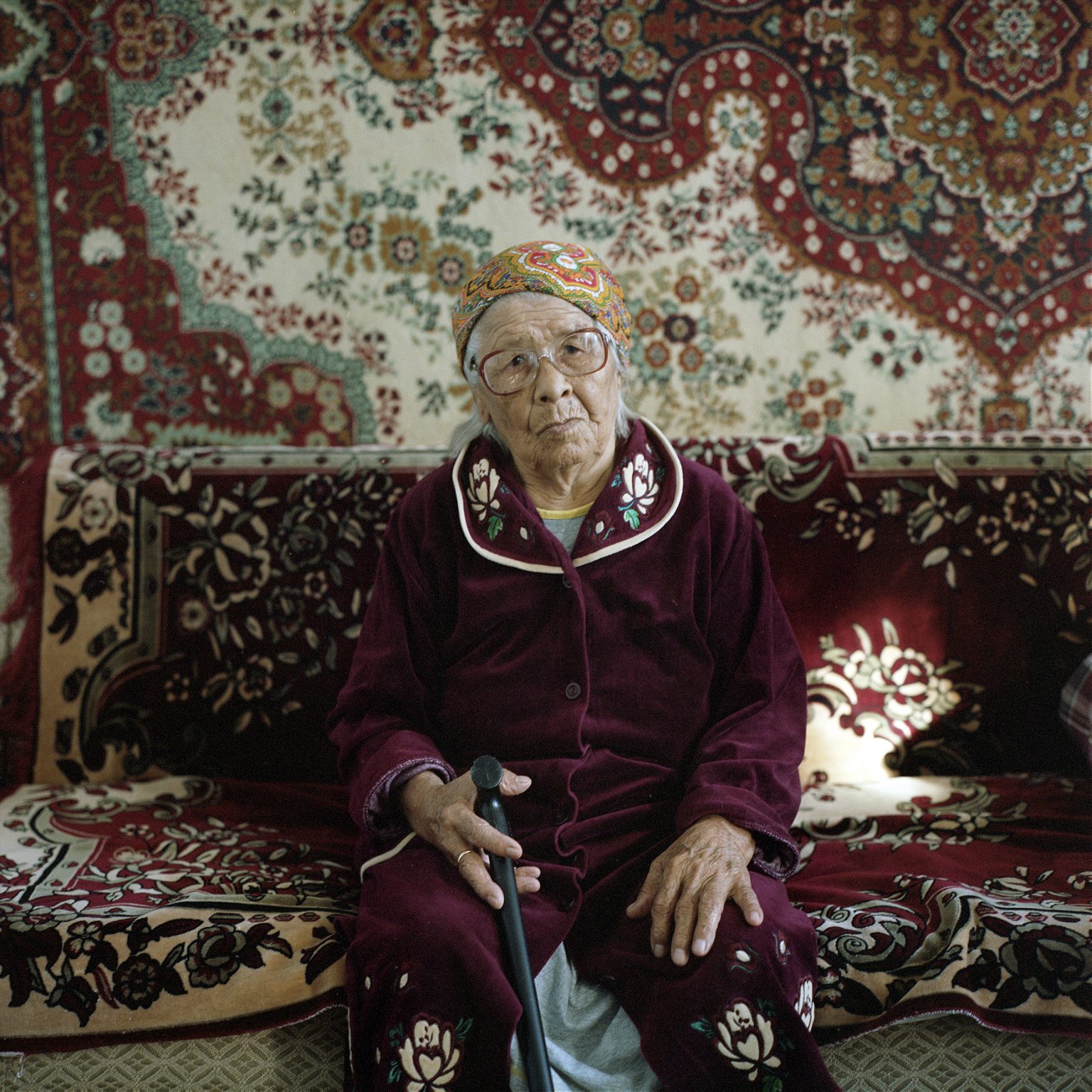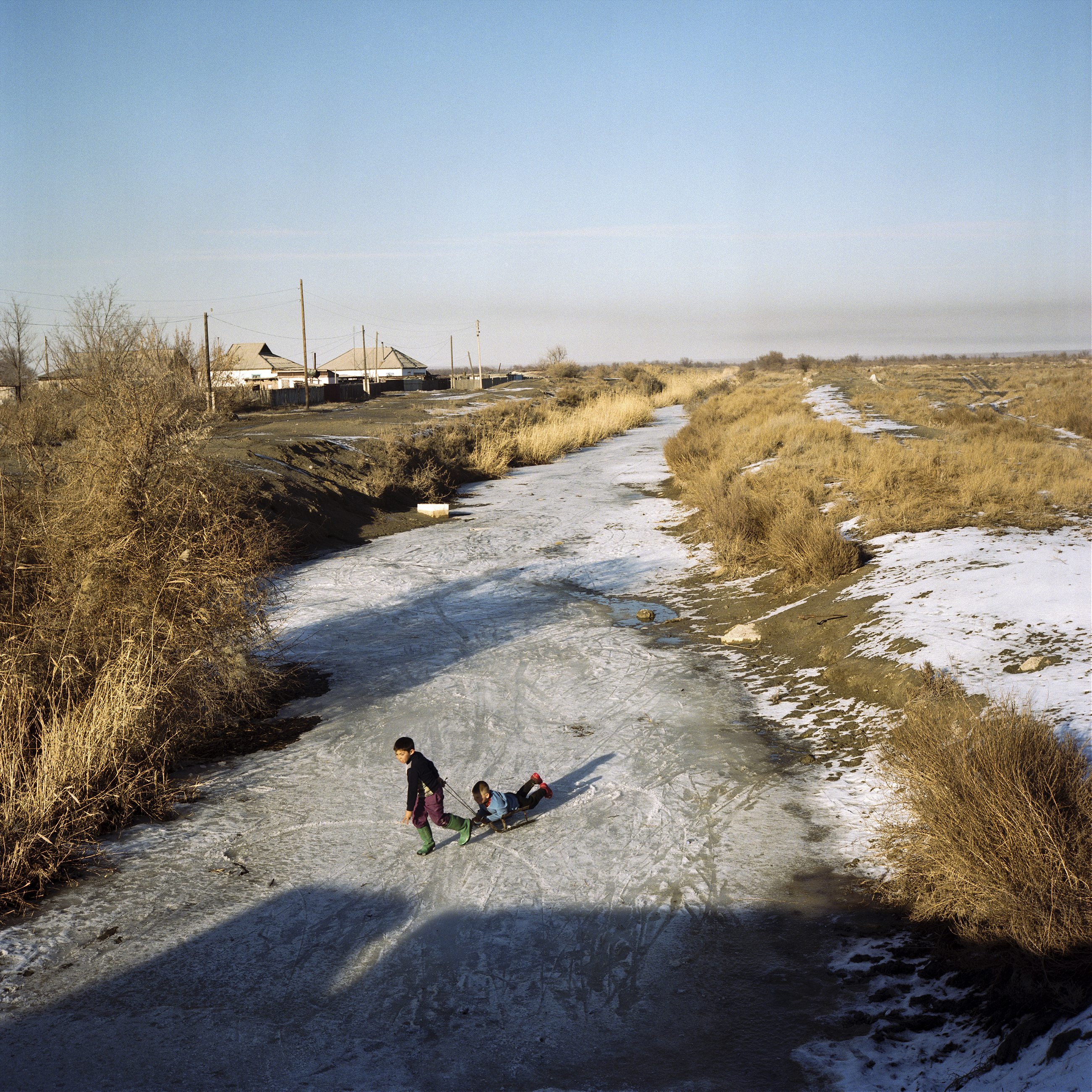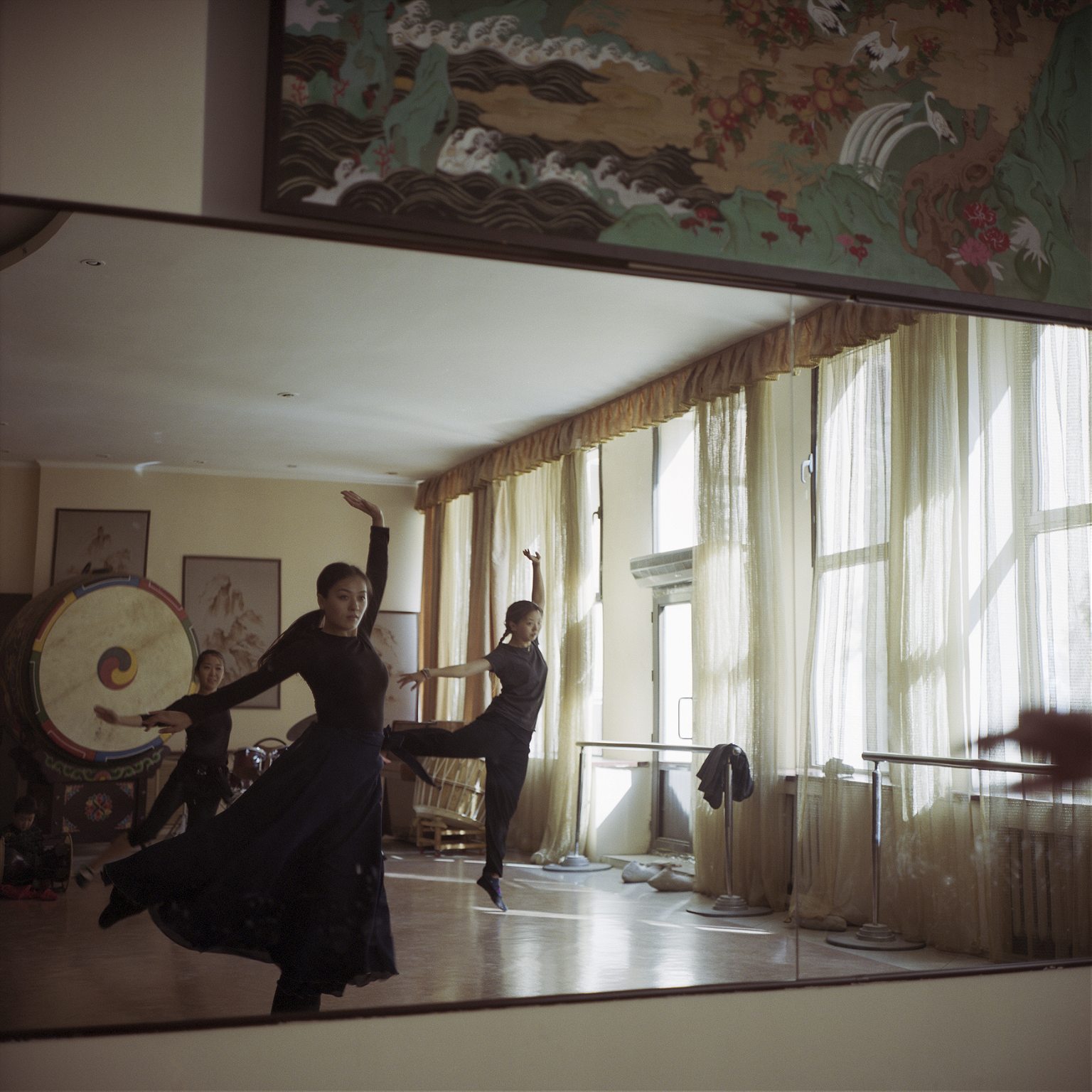A photographer documents the Koreans of Kazakhstan’s dying dialect, and their future generations.
The Koreans of Kazakhstan first arrived in 1937. Before then, they had quietly lived in Vladivostok and Moscow for years and had integrated into Soviet society, far from the famine, poverty, and Japanese oppression they had left back home. But Stalin considered them “unreliable people,” and with little to no notice they were sent to Central Asia and told to grow crops on icy terrain. Seventy-seven years later, it was their language that brought Michael Vince Kim, a young linguistics student, to their homes. Koryo-mar, a mixture of Russian and an old Korean dialect that predates the peninsula’s partition, is rapidly dying out. As part of his studies, Kim documented those who can still speak it, as well as their children and grandchildren. He joined us from his home in London.
Roads & Kingdoms: You discovered this story through language. Can you tell us about that?
Michael Vince Kim: I was studying linguistics at Edinburgh University and I was starting to look for topics that I could research for my dissertation. Language is something I’ve always been curious about because I was born in the US, my parents are from South Korea but I grew up in Argentina. The issue of language and identity was always central in my life, so I wanted to do something about that. If possible, something I could identify with. So I started researching different varieties of Korean and I came across this dialect called Koryo-mar. I thought it was really particular because it was a dialect spoken by Koreans living in Central Asia and I didn’t even know there were Koreans there in the first place.

R&K: How did they get there?
Kim: It turns out that they had migrated from the northern part of the Korean peninsula to the Russian Far East, especially around the city of Vladivostock. They lived there from the 1860s until 1937, when they were deported to Central Asia by Stalin because of ongoing conflicts with Japan. They didn’t trust Korean people, they feared that they could be spies. At the time, standard Korean didn’t exist. It was created in the 1950s when the country was divided. So this community just spoke a dialect from the very northern part of what is now North Korea. It survived through this community that moved to Russia and it got mixed with Russian. Now when you talk to people who speak Koryo-mar, you can hear traces of a dialect that does not exist in Korea anymore or barely exists because standard languages absorb all dialects. Historically, it’s very interesting. At the same time you also see how the evolution of language works when it mixes with another language. So I started researching this subject and I thought I had to go there because this language was dying very quickly.

R&K: Where exactly did you go?
Kim: Initially I went to Almaty, which is the ex-capital and the biggest city in Kazakhstan. I was trying to look for contacts because I went there without knowing anyone, and I found that there were lots of Korean organizations but most of the Korean people there didn’t speak Koryo-mar. They had fully adopted Russian as they first language. I did find the Korean theater of Almaty, which is composed of ethnic Koreans who perform plays about Korean themes. But soon after that I went to Ushtobe, which is a small town where I knew I would find older people who spoke Koryo-mar, and I did. I knew someone who was from that town and she found me this dodgy hostel that didn’t even have a front door, so I got out of there pretty quickly. She told me about a church founded by a South Korean woman from the US so I went there and I noticed there were missionaries staying in the church, so I asked if I could stay for a couple of weeks while doing my research and luckily they accepted. That was my gateway.
R&K: What was the church’s relation with the Korean-Kazakh community?
Kim: The woman who founded it was from South Korea but everyone else was from the Kazakh Korean community. There are South Koreans in Central Asia but my project wasn’t about them. They’re migrants who came much more recently, in the 90s and 2000s, for completely different reasons. The Korean-Kazakhs have a very different culture after over 100 years of being apart from Korea. I can relate to that because I grew up in Argentina and I went to South Korea a couple of times and I feel like a foreigner there, even though I can speak the language. People can tell, you know, so it’s always a bit strange.

R&K: So tell me about the Korean-Kazakhs, what did you ask them about?
Kim: Usually I would ask them first if they spoke Korean, and their answer would be no. If they were people who had survived deportation, they would generally remember some Koryo-mar, and I could understand it partly. Koryo-mar is very different from Korean, and South Koreans have a hard time understanding it because when languages start deteriorating, grammatical aspects of the language start changing. When that happens native speakers of a language have a hard time understanding semi-speakers. So if they spoke the dialect, we would try to speak in it so I could document it. They filled in the rest in Russian through my translator, who turned out to be a South Korean student of Russian language who was volunteering at the church. What was curious was that they understood my Korean, which was not very fluent, more than hers. I thought this was very interesting. When languages start dying out, semi-speakers tend to show the same patterns of grammatical decay, so really we both shared the same broken Korean. And they related with me more than with South Koreans because we had mixed cultures.

R&K: Do they actually still speak Koryo-mar amongst each other?
Kim: Almost no one speaks the dialect anymore. The older people remember phrases, but they have a hard time trying to construct new phrases. With the younger people, I would speak in Russian through my translator. They would only have a passive knowledge of the dialect, but interestingly some of them study standard Korean. Actually a lot of Koreans from Kazakhstan have moved to South Korea. It makes no sense to study the old dialect, and in fact there’s no way of studying it anymore.
R&K: Tell me about the deportations. Did all the Koreans living in the USSR get sent to Kazakhstan?
Kim: First of all, the deportations involved not only Koreans but people from all ethnic minorities, including Germans for example. But the Koreans were the first ones, in 1937. They were deported with very short notice and sometimes no notice at all. The Koreans who had power or who were higher up in politics or in society, a lot of them were actually assassinated because the Soviet government feared some kind of rebellion or an opposition.

R&K: But interestingly they were welcomed by the locals, right?
Kim: Koreans were deported to Kazakhstan and Uzbekistan. I actually just came back from Uzbekistan two months ago where I was continuing the project. In both countries, they felt very welcomed by the local people. There were nothing but good stories being told. When they arrived in Kazakhstan, the Koreans had been promised building materials, which they never got. They didn’t have anything to make houses, so a lot of Koreans were welcomed into Kazakh families. Kazakh people fed them, and in exchange they taught them about agriculture, because Kazakhs were traditionally nomadic people who lived mostly on a meat diet and Koreans were the opposite. It was sort of an exchange.
The country they’re from has been divided

R&K: So that would explain why a lot of them ended up staying there.
Kim: Yes, definitely. I asked people: if you had the chance to go to Korea or elsewhere, would you go there? Some of them said no, because they said Kazakhstan is their home.
R&K: They actually left Korea before it was divided into two countries. Maybe they feel like they don’t belong there anymore?
Kim: Yes, that’s another issue. You can imagine that their sense of identity is extremely complex because it’s not only the fact that they are in a different country, but also that the country they’re from has been divided. They can’t really go back to North Korea, so those who do return go to South Korea, which isn’t where they’re from. However, before the fall of the USSR some did go to North Korea. I met people who had gone in the 80s to participate in the ceremony of Kim Il Sung’s birthday for example.
R&K: How much do South Koreans know about this community?
Kim: Not everyone is aware of it. The Central Asian Korean community is actually very big. I think it’s 100,000 Koreans in Kazakhstan and maybe 170,000 in Uzbekistan and 170,000 in Russia. And a lot of people in South Korea aren’t aware of it. I can relate to that because in Argentina there’s about 22,000 Koreans and when I talk to South Koreans, they have no idea how we ended up there. I feel like it could be mentioned more in history books. That’s something that I would like to contribute to.

R&K: The history of Central Asia’s Korean community?
Kim: Yes. Korean migration happened mostly after the Cold War during the 60s, 70s and 80s, so most of the people who immigrated spoke standard Korean. What makes this community so unique is that it arrived before Korea was divided. The Koryo-mar dialect became completely isolated and evolved in its own timeline, so there is nothing like it. I just came back from Uzbekistan and I’m thinking of going back to Central Asia and making the journey they made from the Russian Far East to Central Asia by train. I’m planning to go to Vladivostok to see what remains of Korean culture there and what the Korean community looks like right now. And I also want to go to South Korea to document the Central Asian Korean community that has gone back.
R&K: What do you think we can learn from knowing more about this history?
Kim: Working on this story was a bit like seeing what will become of the Korean diaspora across the world in future generations. Because they immigrated much earlier, their cultural evolution is at the furthest stage, so it’s very interesting to see to what extent cultures can mix and evolve. On a personal level, it has been a real experience. I thought I knew a lot about Korean culture, but it turns out I didn’t.
Cover image: An ethnic Korean woman with Russian and Korean food in a restaurant in Eskeldy-bi. This town was previously known as Dalniy Vostok (Russian for “far east”) and was of one of the first Korean collective farms in Kazakhstan. Photo: Michael Vince Kim/INSTITUTE